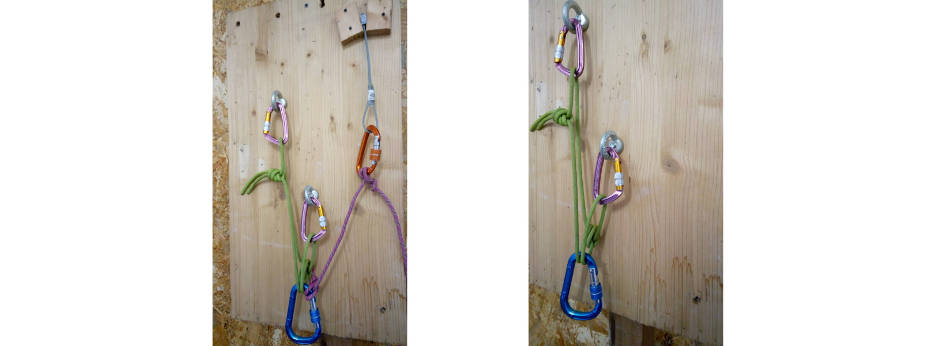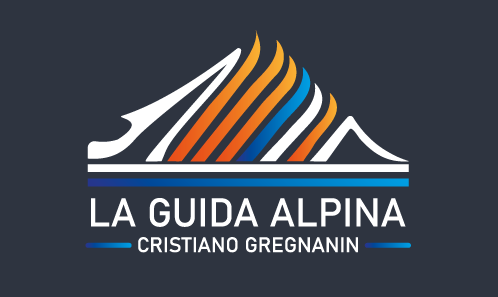
2 types of mountaineering stops
Share
In mountaineering, a rest stop is a stopping point where the roped party reunites and from which they set off again to continue the ascent.
It is essential to build rest stops that are safe, reliable and, if possible, comfortable.
The construction of a belay requires the use of at least 2 reliable anchors to be connected appropriately to each other.
There are many possible connections, but the most used are the semi-mobile connection and the fixed connection. Unfortunately, there is no perfect connection, both have pros and cons and it will be the climber who will have to decide from time to time which one best suits the situation.
Semi-mobile connection
This type of connection ensures that the vertex can move with a certain range determined by the two nodes located to the left and right of the vertex itself. The closer these nodes are to each other, the less the vertex will be able to move. Conversely, the further they are from each other, the freer the vertex will be to move.
Usually one tries to adjust the two knots to ensure a certain degree of mobility of the vertex but without making too large adjustments to avoid that in the event of failure of one of the two anchors the other suffers a violent backlash.
With this type of stop, at a purely theoretical level, the loads should be equally distributed between the two anchors, but in reality some practical tests carried out in the laboratory have highlighted how the friction of the connecting cord (but also other components) tends to considerably reduce the distribution.
The semi-mobile connection is often used in rock climbing in the presence of horizontal traverses by appropriately adjusting the two knots according to the direction of travel but also on snow where the anchors (for example dead bodies) tend to settle inside the snow cover by moving a few centimetres. This movement is supported by a certain mobility of the vertex.
Fixed connection
In the fixed connection, the direction of load must be foreseen during the construction phase, in this way it is avoided that one anchor is loaded too much compared to the other.
This connection is excellent in the case of unreliable anchors because if one of the two fails, the other does not receive any backlash (while in the semi-mobile belay it does).
It is well suited for recovering the second climber, but also for belaying the leader using the ventral safety device and taking care to apply the false quickdraw to the top. In the event of a leader falling, if the belayer performs a good dynamic ventral safety device and if he is correctly hanging from the top, the belay should not overturn excessively, thus maintaining the correct direction of load as was planned during the construction phase.

Observations
The use of a fixed belay is recommended in most cases, where the need for a semi-mobile belay is not more than evident (traverses, snow).
To minimize the loads on the belay, the ventral belay on the lead climber is generally preferable, provided you know how to manage it correctly.
In case of unreliable anchors, the fixed belay can be made with a piece of dynamic rope in order to increase dissipation, however it is good to remember that the optimal solution in this case is to add further anchors to the belay until it is considered safe.

